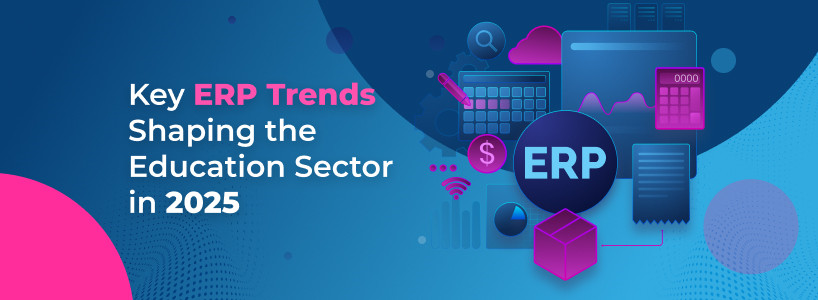In 2025, the education sector continues to undergo a digital transformation, with Enterprise Resource Planning (ERP) systems playing a crucial role in streamlining operations, enhancing learning experiences, and improving institutional efficiency. As technology evolves, educational institutions are increasingly leveraging ERP to stay competitive and meet the expectations of tech-savvy students and faculty.
Here are the key ERP trends shaping the education landscape in 2025:
1. Cloud-Based ERP Solutions
Cloud adoption remains a dominant trend. Institutions are moving away from traditional on-premise systems and embracing cloud-based ERP for education due to its flexibility, scalability, and cost-effectiveness. With cloud-based solutions, institutions can ensure secure data access from anywhere, making remote learning and administration more efficient.
2. Integration with AI and Analytics
Artificial Intelligence (AI) and data analytics are being integrated into ERP systems to offer predictive insights. From forecasting student enrollment to tracking academic performance and identifying at-risk students, ERP platforms are becoming intelligent tools that support data-driven decisions. Real-time analytics dashboards allow institutions to optimize resource allocation and academic planning.
3. Mobile-First Interfaces
Todays students and faculty expect mobile accessibility. ERP vendors are designing mobile-first platforms that offer seamless experiences across devices. Features like attendance tracking, fee payments, grading, and communication are now accessible via mobile apps, enabling users to stay connected anytime, anywhere.
4. Personalized Learning Management Integration
ERP systems in 2025 are increasingly integrated with Learning Management Systems (LMS) to provide personalized education paths. These integrations help in tracking individual student progress, generating tailored content, and improving academic outcomes. Educators can better manage curriculum delivery and assessments within a unified ERP ecosystem.
5. Enhanced Cybersecurity Measures
With the rise of cyber threats, ERP providers are prioritizing data security. Educational institutions store vast amounts of sensitive data, making ERP software for schools more robust with multi-layered authentication, encrypted data transmission, and regular compliance updates to meet global standards.
6. Automation of Administrative Processes
Repetitive tasks like admission processing, timetable scheduling, and payroll management are being automated through ERP. This reduces manual errors, improves efficiency, and allows staff to focus on more strategic tasks. Workflow automation is helping institutions save both time and resources.
Conclusion
ERP technology in education is not just about digital managementit's about creating a smarter, more connected academic ecosystem. As 2025 unfolds, the institutions that harness these trends will lead the way in delivering efficient, personalized, and future-ready learning experiences.
By investing in the right ERP solution, educational organizations can improve both operational efficiency and student satisfaction. Keeping pace with these trends is essential for institutions aiming to remain agile and innovative in a rapidly evolving digital age.
